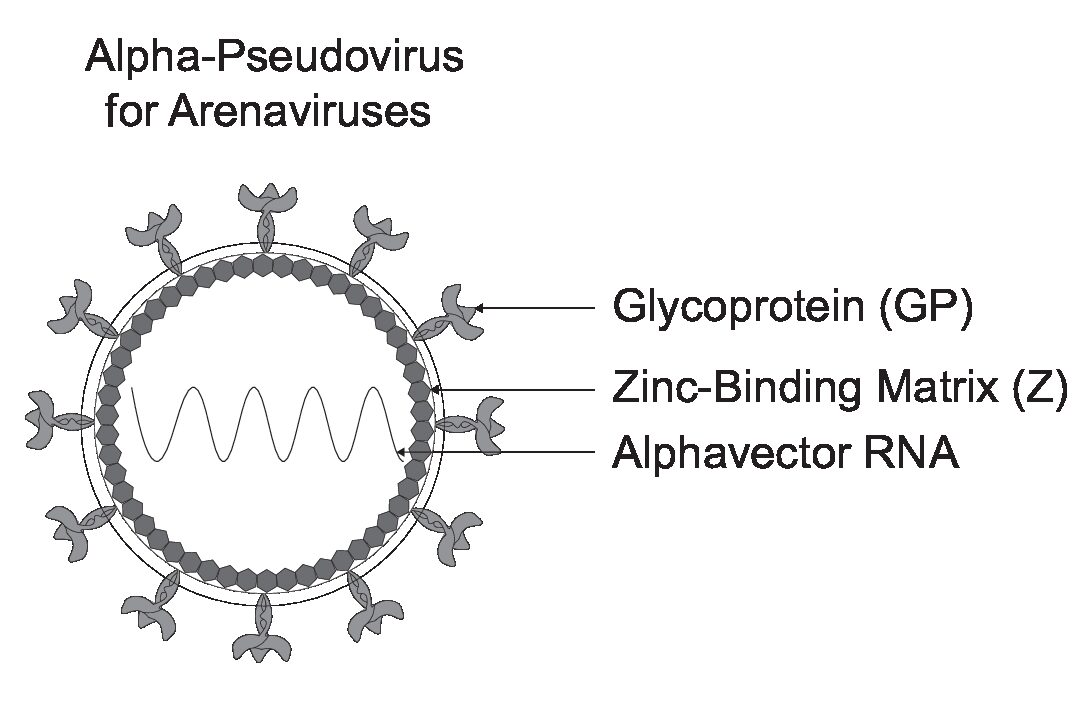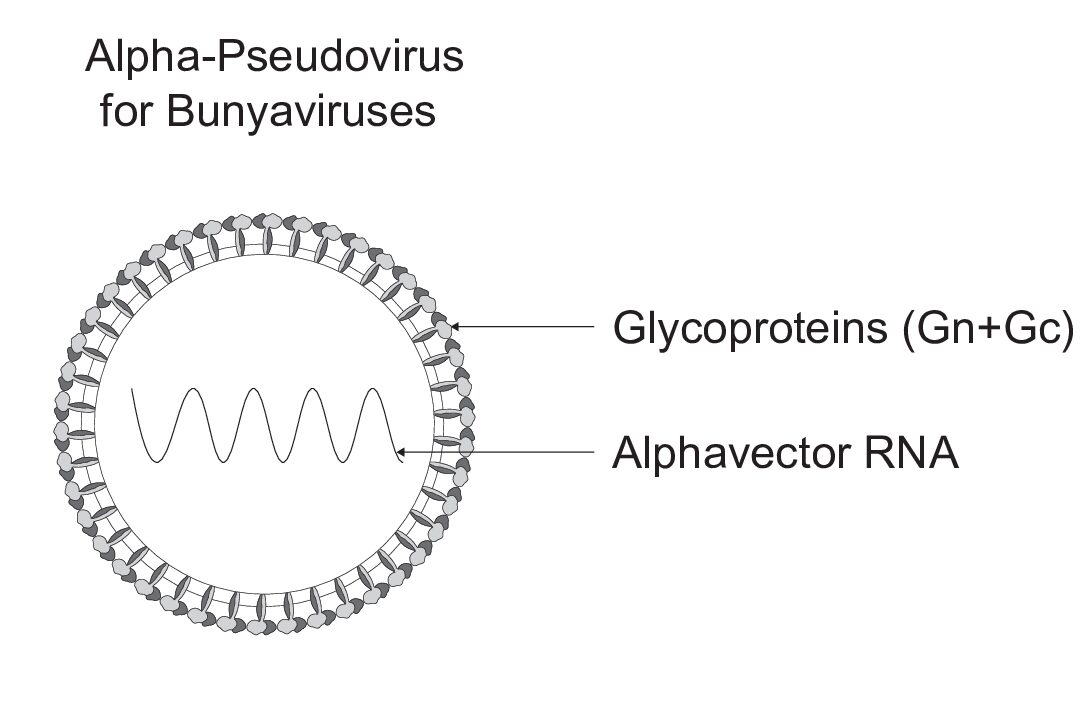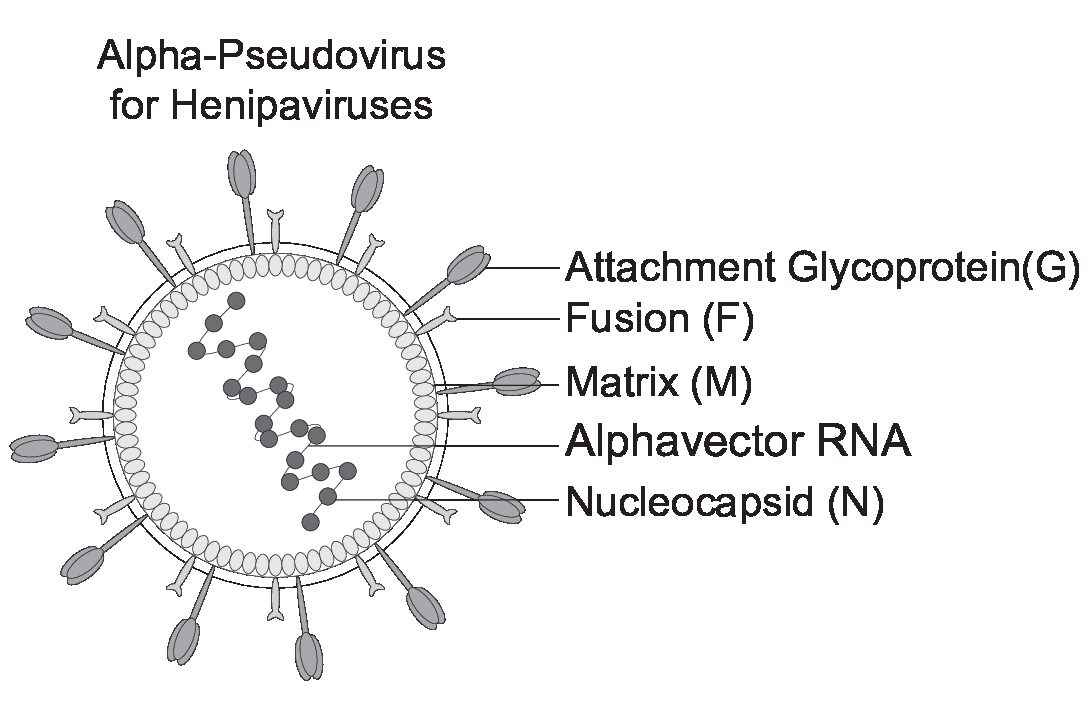Product Description
Product Description
Rapid Alpha-Pseudovirus for Lassa Virus
Lassa virus (LASV) Glycoprotein Complex (GPC) hybrid Alpha-pseudovirus, formulated using the NCBI reference sequence KU961971.1.
Applications:
- Facilitating LASV pseudovirus transduction of target cells for viral entry and functional studies
- Enabling rapid Anti-LASV drug screening
- Supporting swift Anti-LASV neutralizing antibody screening
Description:
A novel rapid hybrid alpha-pseudovirus for Lassa virus (HA-LASV) and other Bunyavirales viruses. HA-LASV particles are pseudoviruses assembled from the structural proteins of the Lassa virus, glycoprotein (GP), and the Zinc-binding protein (Z) and package an alphaviral vector for reporter gene expression.
The alpha-pseudoviruses are single-cycle viruses with self-replicating RNA for rapid quantification of neutralizing antibodies and entry-inhibiting drugs. These pseudoviruses are BSL-2 safe and ready to use for studying viral entry. Additionally, we help our customers to assemble HA-LASV pseudoviruses at any scale.
To enhance your pseudovirus entry, ask about receiving a free sample of our propriety InfectinTM which can significantly promote productive viral infection in a variety of host cells, enhancing viral infection rates by 3 to 20-fold.
Background:
Each LASV virion contains two single-stranded RNA segments, in which each segment encodes two proteins. The nucleoprotein (NP) encapsulates the viral genome segments, which is essential for both transcription of mRNA and replication of genome segments. The glycoprotein complex (GPC) mediates viral attachment and cell entry. The large (L) protein is an RNA polymerase involved in transcription, replication, and cap-snatching. The Zinc-binding (Z) protein serves as a matrix protein responsible for viral assembly and budding. Additionally, the Z protein negatively regulates viral replication and transcription, which is important for the suppression of viral and host cell translation.
LASV enters the host cell via receptor-mediated endocytosis, particularly, by binding to the peripheral membrane at the cell surface called α-dystroglycan (α-DG). As the endosomal pH drops, the LASV glycoprotein complex (GPC) undergoes a conformational shift that enables the dissociation from α-DG and binding to an endosomal receptor, lysosomal-associated membrane protein 1 (LAMP1). Once bound to LAMP1, the GPC undergoes additional conformational changes that mediate virus–endosomal membrane fusion and enable the release of the LASV genome segments into the cytoplasm.
If you have any additional questions please contact us by email: info@virongy.com
Example of results:
Rapid LASV alpha-pseudovirus luciferase transduction of Vero cells (Left): Vero cells were transduced with HA-LASV(Luc) alpha-pseudovirus (with a luciferase reporter). Reporter expression was quantified at 24 hours post-transduction (luciferase assay).
Rapid LASV alpha-pseudovirus GFP transduction of Vero cells (Right): Vero cells were transduced with HA-LASV(GFP) alpha-pseudovirus (with a GFP reporter). Reporter expression was quantified at 24 hours post-transduction (GFP flow cytometry).

LASV pseudoviruses are intended for Research Use Only and are not for diagnostic or therapeutic purposes or use in humans or animals.
Documents
References
References
Related links:
- Li Q, Liu Q, Huang W, Wu J, Nie J, Wang M, Zhao C, Zhang L, Wang Y. An LASV GPC pseudotyped virus based reporter system enables evaluation of vaccines in mice under non-BSL-4 conditions. Vaccine. 2017 Sep 12;35(38):5172-5178. doi: 10.1016/j.vaccine.2017.07.101. Epub 2017 Aug 7. PMID: 28797730.


 Alpha Pseudovirus – MSDS
Alpha Pseudovirus – MSDS





